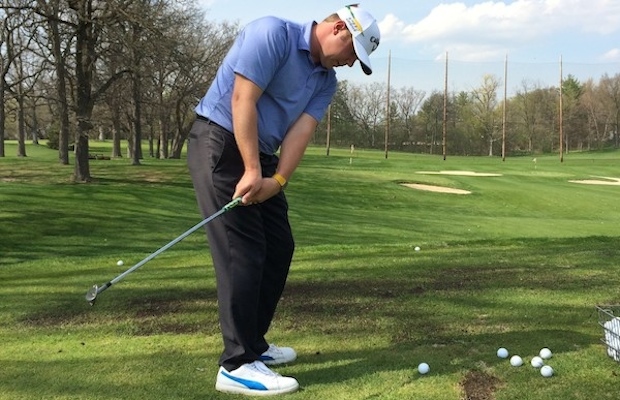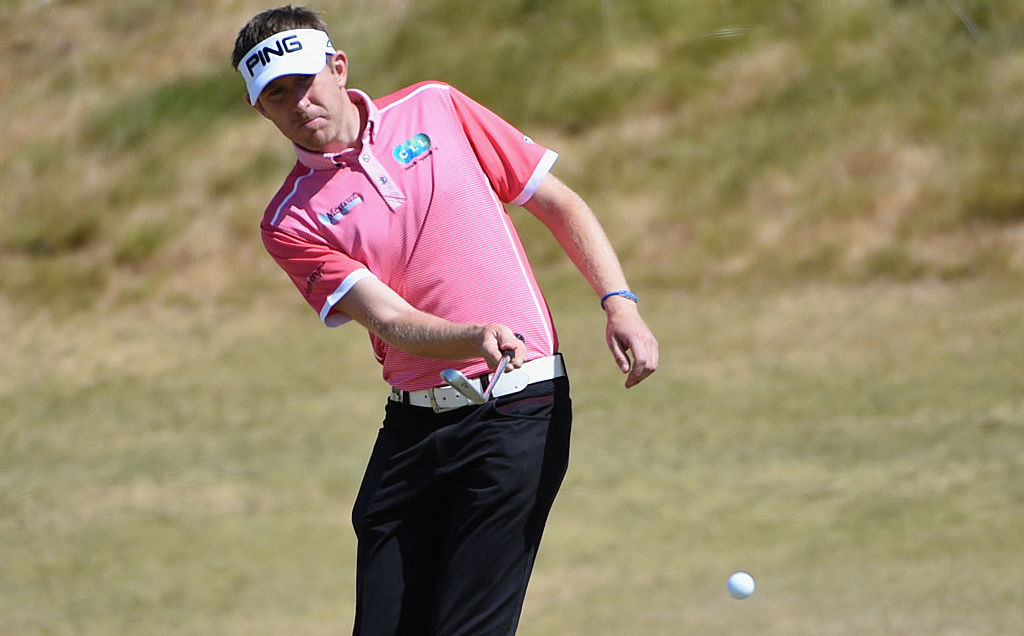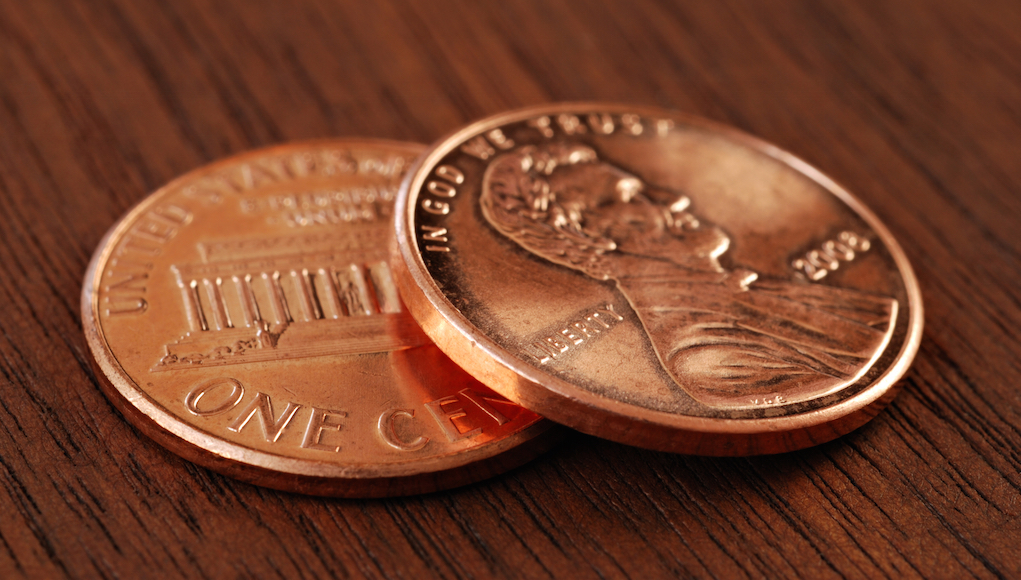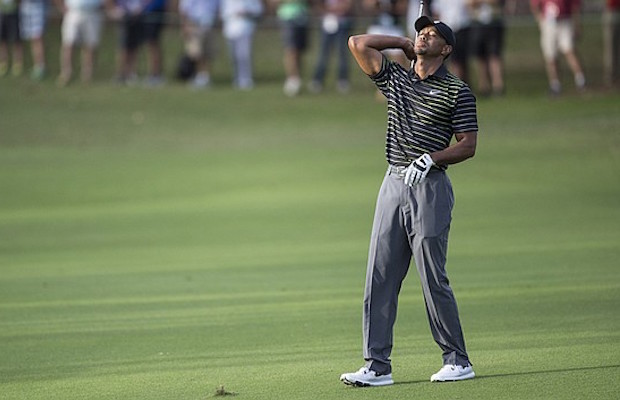Instruction
Possibly the worst swing shape in pitching

There are so many ways to hit good pitch shots, however, there are a few that just don’t work.
I have seen just about every shape of golf swing in my career as an instructor, and most of the time I work with a golfer’s motion and try to make my students great at what they do naturally and what works for them from an efficiency standpoint. There are times, however, where the shape is such that a golfer needs a complete short game “make-over,” and I have to start over with them.
These situations tend to occur in golfers who were probably slicers and made inefficient and drastic changes to their golf swing to learn to hook or draw the ball. They ended up learning to hit shots with an enormous amount of spine tilt away from the target, and this made the club bottom-out before the golf ball and caused them to swing too much from in to out. This change would usually be considered a good overcorrection and a noticeably different ball flight would validate that statement, but it can lead to huge problems with these players’ short games.
Is this You?
This player (shown above) swings the golf club back too shallow and with a closed club face, and he also swings too much in-to-out on these shots. He creates a very shallow angle of attack into the golf ball, which happens because the club head doesn’t get up off of the ground enough in the backswing. It’s low, inside and around on the way back, creating too shallow of an angle of an attack into the ball.
What’s the problem?
This swing shape almost always shows up in the short game as a bit of a “yip.” These are the golfers who struggle more than normal with tight lies and soggy conditions. They become double hitters of chips, get the shanks somewhat frequently and tend to have one distance of shot out of the bunker. Normally, I would hear this type of golfer say: “The motion can’t be that bad, because I can hit pitches fine from the rough.”
Well, here is the problem. The golf ball can sit up in the rough, as in the image below, allowing the golf club to bottom out early and arc ever so slightly up into the golf ball at impact (just like a driver off the tee). This motion does not work when the ball is sitting on the ground, because when the club bottoms out before the ball it usually causes golfers to swing up into the middle of the ball with the leading edge of the club. That sends the ball scooting over the green into trouble.
So how does this player compensate from being too shallow, and learn put the clubface on the ball properly? This player gains a steep angle in the swing by hitting the ball with a closed club face. When the ball is struck solid using this motion and a closed, left-facing clubface (for a righty), the golf ball tends to go long and will end up left of a golfer’s aim at address. When the club comes in too shallow, as aforementioned, it tends to want to bottom out before the ball and then swing up into the ball, thus needing the clubface to be really closed so it can make contact with the ball. Sounds tough to be consistent from here? It is.
Let’s Fix This
Here is the fix. We need to get the golf club swinging steeper going back, more outside your current path and with a downswing where the club swings aggressively to the left on the way through impact, getting out of the way of the golf ball.
The red arrow above shows the club head position and how it is clearly swinging away from the golf ball, which is tracked above with the yellow arrow. What this does is flip flop your current steep and shallow angles. Your clubface is now set more open relative to your setup. It is this shallow angle that allows you to use the bounce of the golf club, and the angle of attack now becomes the steep angle in the motion. This makes it easier to achieve solid hits off of all different types of surfaces.
If you would like to talk more about this, please feel free to comment below and I would be happy to go into this topic further with you. Remember, your game is only as strong the weakest link.
Instruction
The Wedge Guy: Beating the yips into submission

There may be no more painful affliction in golf than the “yips” – those uncontrollable and maddening little nervous twitches that prevent you from making a decent stroke on short putts. If you’ve never had them, consider yourself very fortunate (or possibly just very young). But I can assure you that when your most treacherous and feared golf shot is not the 195 yard approach over water with a quartering headwind…not the extra tight fairway with water left and sand right…not the soft bunker shot to a downhill pin with water on the other side…No, when your most feared shot is the remaining 2- 4-foot putt after hitting a great approach, recovery or lag putt, it makes the game almost painful.
And I’ve been fighting the yips (again) for a while now. It’s a recurring nightmare that has haunted me most of my adult life. I even had the yips when I was in my 20s, but I’ve beat them into submission off and on most of my adult life. But just recently, that nasty virus came to life once again. My lag putting has been very good, but when I get over one of those “you should make this” length putts, the entire nervous system seems to go haywire. I make great practice strokes, and then the most pitiful short-stroke or jab at the ball you can imagine. Sheesh.
But I’m a traditionalist, and do not look toward the long putter, belly putter, cross-hand, claw or other variation as the solution. My approach is to beat those damn yips into submission some other way. Here’s what I’m doing that is working pretty well, and I offer it to all of you who might have a similar affliction on the greens.
When you are over a short putt, forget the practice strokes…you want your natural eye-hand coordination to be unhindered by mechanics. Address your putt and take a good look at the hole, and back to the putter to ensure good alignment. Lighten your right hand grip on the putter and make sure that only the fingertips are in contact with the grip, to prevent you from getting to tight.
Then, take a long, long look at the hole to fill your entire mind and senses with the target. When you bring your head/eyes back to the ball, try to make a smooth, immediate move right into your backstroke — not even a second pause — and then let your hands and putter track right back together right back to where you were looking — the HOLE! Seeing the putter make contact with the ball, preferably even the forward edge of the ball – the side near the hole.
For me, this is working, but I am asking all of you to chime in with your own “home remedies” for the most aggravating and senseless of all golf maladies. It never hurts to have more to fall back on!
Instruction
Looking for a good golf instructor? Use this checklist

Over the last couple of decades, golf has become much more science-based. We measure swing speed, smash factor, angle of attack, strokes gained, and many other metrics that can really help golfers improve. But I often wonder if the advancement of golf’s “hard” sciences comes at the expense of the “soft” sciences.
Take, for example, golf instruction. Good golf instruction requires understanding swing mechanics and ball flight. But let’s take that as a given for PGA instructors. The other factors that make an instructor effective can be evaluated by social science, rather than launch monitors.
If you are a recreational golfer looking for a golf instructor, here are my top three points to consider.
1. Cultural mindset
What is “cultural mindset? To social scientists, it means whether a culture of genius or a culture of learning exists. In a golf instruction context, that may mean whether the teacher communicates a message that golf ability is something innate (you either have it or you don’t), or whether golf ability is something that can be learned. You want the latter!
It may sound obvious to suggest that you find a golf instructor who thinks you can improve, but my research suggests that it isn’t a given. In a large sample study of golf instructors, I found that when it came to recreational golfers, there was a wide range of belief systems. Some instructors strongly believed recreational golfers could improve through lessons. while others strongly believed they could not. And those beliefs manifested in the instructor’s feedback given to a student and the culture created for players.
2. Coping and self-modeling can beat role-modeling
Swing analysis technology is often preloaded with swings of PGA and LPGA Tour players. The swings of elite players are intended to be used for comparative purposes with golfers taking lessons. What social science tells us is that for novice and non-expert golfers, comparing swings to tour professionals can have the opposite effect of that intended. If you fit into the novice or non-expert category of golfer, you will learn more and be more motivated to change if you see yourself making a ‘better’ swing (self-modeling) or seeing your swing compared to a similar other (a coping model). Stay away from instructors who want to compare your swing with that of a tour player.
3. Learning theory basics
It is not a sexy selling point, but learning is a process, and that process is incremental – particularly for recreational adult players. Social science helps us understand this element of golf instruction. A good instructor will take learning slowly. He or she will give you just about enough information that challenges you, but is still manageable. The artful instructor will take time to decide what that one or two learning points are before jumping in to make full-scale swing changes. If the instructor moves too fast, you will probably leave the lesson with an arm’s length of swing thoughts and not really know which to focus on.
As an instructor, I develop a priority list of changes I want to make in a player’s technique. We then patiently and gradually work through that list. Beware of instructors who give you more than you can chew.
So if you are in the market for golf instruction, I encourage you to look beyond the X’s and O’s to find the right match!
Instruction
What Lottie Woad’s stunning debut win teaches every golfer

Most pros take months, even years, to win their first tournament. Lottie Woad needed exactly four days.
The 21-year-old from Surrey shot 21-under 267 at Dundonald Links to win the ISPS Handa Women’s Scottish Open by three shots — in her very first event as a professional. She’s only the third player in LPGA history to accomplish this feat, joining Rose Zhang (2023) and Beverly Hanson (1951).
But here’s what caught my attention as a coach: Woad didn’t win through miraculous putting or bombing 300-yard drives. She won through relentless precision and unshakeable composure. After watching her performance unfold, I’m convinced every golfer — from weekend warriors to scratch players — can steal pages from her playbook.
Precision Beats Power (And It’s Not Even Close)
Forget the driving contests. Woad proved that finding greens matters more than finding distance.
What Woad did:
• Hit it straight, hit it solid, give yourself chances
• Aimed for the fat parts of greens instead of chasing pins
• Let her putting do the talking after hitting safe targets
• As she said, “Everyone was chasing me today, and managed to maintain the lead and played really nicely down the stretch and hit a lot of good shots”
Why most golfers mess this up:
• They see a pin tucked behind a bunker and grab one more club to “go right at it”
• Distance becomes more important than accuracy
• They try to be heroic instead of smart
ACTION ITEM: For your next 10 rounds, aim for the center of every green regardless of pin position. Track your greens in regulation and watch your scores drop before your swing changes.
The Putter That Stayed Cool Under Fire
Woad started the final round two shots clear and immediately applied pressure with birdies at the 2nd and 3rd holes. When South Korea’s Hyo Joo Kim mounted a charge and reached 20-under with a birdie at the 14th, Woad didn’t panic.
How she responded to pressure:
• Fired back with consecutive birdies at the 13th and 14th
• Watched Kim stumble with back-to-back bogeys
• Capped it with her fifth birdie of the day at the par-5 18th
• Stayed patient when others pressed, pressed when others cracked
What amateurs do wrong:
• Get conservative when they should be aggressive
• Try to force magic when steady play would win
• Panic when someone else makes a move
ACTION ITEM: Practice your 3-6 foot putts for 15 minutes after every range session. Woad’s putting wasn’t spectacular—it was reliable. Make the putts you should make.
Course Management 101: Play Your Game, Not the Course’s Game
Woad admitted she couldn’t see many scoreboards during the final round, but it didn’t matter. She stuck to her game plan regardless of what others were doing.
Her mental approach:
• Focused on her process, not the competition
• Drew on past pressure situations (Augusta National Women’s Amateur win)
• As she said, “That was the biggest tournament I played in at the time and was kind of my big win. So definitely felt the pressure of it more there, and I felt like all those experiences helped me with this”
Her physical execution:
• 270-yard drives (nothing flashy)
• Methodical iron play
• Steady putting
• Everything effective, nothing spectacular
ACTION ITEM: Create a yardage book for your home course. Know your distances to every pin, every hazard, every landing area. Stick to your plan no matter what your playing partners are doing.
Mental Toughness Isn’t Born, It’s Built
The most impressive part of Woad’s win? She genuinely didn’t expect it: “I definitely wasn’t expecting to win my first event as a pro, but I knew I was playing well, and I was hoping to contend.”
Her winning mindset:
• Didn’t put winning pressure on herself
• Focused on playing well and contending
• Made winning a byproduct of a good process
• Built confidence through recent experiences:
- Won the Women’s Irish Open as an amateur
- Missed a playoff by one shot at the Evian Championship
- Each experience prepared her for the next
What this means for you:
• Stop trying to shoot career rounds every time you tee up
• Focus on executing your pre-shot routine
• Commit to every shot
• Stay present in the moment
ACTION ITEM: Before each round, set process goals instead of score goals. Example: “I will take three practice swings before every shot” or “I will pick a specific target for every shot.” Let your score be the result, not the focus.
The Real Lesson
Woad collected $300,000 for her first professional victory, but the real prize was proving that fundamentals still work at golf’s highest level. She didn’t reinvent the game — she simply executed the basics better than everyone else that week.
The fundamentals that won:
• Hit more fairways
• Find more greens
• Make the putts you should make
• Stay patient under pressure
That’s something every golfer can do, regardless of handicap. Lottie Woad just showed us it’s still the winning formula.
FINAL ACTION ITEM: Pick one of the four action items above and commit to it for the next month. Master one fundamental before moving to the next. That’s how champions are built.
PGA Professional Brendon Elliott is an award-winning coach and golf writer. You can check out his writing work and learn more about him by visiting BEAGOLFER.golf and OneMoreRollGolf.com. Also, check out “The Starter” on RG.org each Monday.
Editor’s note: Brendon shares his nearly 30 years of experience in the game with GolfWRX readers through his ongoing tip series. He looks forward to providing valuable insights and advice to help golfers improve their game. Stay tuned for more Tips!






















Eric
Jun 2, 2014 at 2:19 pm
Yes, these are my symptoms as well. I am a 0 who used to be a plus playing to a 5 due to poor chipping. They started when I was taught to swing with my right arm instead of my left, which led to me swinging inside back, and then outside and to the right forward. But I also “drop” my spine angle on the way back – now I understand that means I have to “lift” to get back to level – hence a chunk if I fail to lift, or a skull if I do.
I really don’t want to have a different swing with my chipping motion than my regular swing. I DO notice that when my club goes left my strikes are better. This is very interesting and I would like to hear more about going left after impact. Can you elaborate on what causes the club to do that?
Jeremy Anderson
Jun 5, 2014 at 8:47 pm
Your strikes are better when the club swings left because the club is swinging down using the bounce of the golf club and your chest. The club face is stable (not rotating closed) and when you use the bounce the leading edge of the club doesn’t dig. If you’d like to chat more message me through my website jjagolf.com
Jeff K
Jun 2, 2014 at 11:02 am
I too am prone to chunked, skulled and especially double hit chips. Even shanked 2 pitches last week. And one distance out of bunkers fit too! Yet I can have streaks of decent chipping but even then long runners tend to hook.
I find the more I “hinge” my wrists on the backswing,the worse it gets. I’m trying the Stricker style dead arm chips with varied success. What should I do with my wrists – hinge and hold, or just focus on what the clubhead is doing? Same with body turn – turn back and through, or just swing down and left with the arms? Thanks!!
Jeremy Anderson
Jun 5, 2014 at 8:50 pm
Try using less hinge if that helps, but swing the club more outside to gain that as a steep angle. If you don’t hinge and you swing inside… problems will only mount. If you’d like to chat more message me through my website jjagolf.com
Larry
May 31, 2014 at 11:38 pm
I find what I watched John Daly doing about 20 years ago to work just fine. I watched Daly pitching shot after shot on prctice green next to the hole by pulling the club inside and comming back on the same line…it works perfect to this day. (Daly does not do this anymore, same as his drive went from a killer draw to fade).
Jeremy Anderson
Jun 5, 2014 at 8:54 pm
John is or maybe was what I call a .1%er. Meaning he’s in the .1% of the people that get away with anything their so gifted.
Brad Zimmer
May 30, 2014 at 8:06 am
Thanks for the insight. I’m a low handicapper (2), and as part of becoming one, I worked for years groove a down the line to inside out path in my full swing. Occasionally I go to far with it and get trapped inside, or get flat with my overall arc and have to refocus on taking the club away either straight back or slightly outside the line. To the short game, before I made the wholesale changes in swing path, I never worried about contact on chips and pitches. These days I use course management to stay out of the tricky ranges (if I can’t easily get pin high in two on a par five,I won’t hit a layup within 90 yards.) In order to make solid contact, I find I have to stand open to the target line (foot line pointing left) and almost feel as though I’m opening the club through impact. For some reason, I fond that moving the ball slight forward helps as well, but it’s quite a “rig.” The flaw in my pitching/chipping motion may be subtle, but I think you’ve hit on it, and your piece has been very helpful. Thanks.
Jeremy Anderson
May 30, 2014 at 10:02 pm
Brad,
I’m glad you find the article helpful. As far as getting your feet left of target it’s good to drop the left foot back but it’s important that you keep your right foot perpendicular to your target line. As far as finding it helpful to play the ball forward —- think of your body as the protractor and the clubhead is the pencil as the ball moves forward in your stance the club wants to arc left. All great things! Message me if you have anymore questions or comments.
JA
Dave
May 29, 2014 at 10:53 pm
You have perfectly described my pitching. Yips, double hits, skulls, and fat chugged shots. My good shots are rare. I am turning pars and bogeys into doubles, triples , and worse. If I miss the green, I’m dead. So I am really interested in getting this fixed. How do I make this change? Align left? Path on backswing outside going back? I really need a full makeover. Please help!!
Jeremy Anderson
May 30, 2014 at 7:11 am
Yes, you need to change the direction of your golf swing. Your angle of attack into ball is too shallow and you try to balance it with the steep angle being a closed club face. Read what I wrote for Todd.
All my best,
JA
Owen
May 29, 2014 at 1:53 pm
So, how would you compare the original photo to a person who is trying to hit a chip shot? David Leadbetter often talked in his early videos (like early 90’s, so things have changed) about how a chip shot has a closed face going back, and utilizes a lot of turn. I know there’s huge differences between chips and pitches. Lately I’ve been chunking some chips, and I wonder if it’s because I’m combining chip and pitch motion- going back closed and turning, but then letting my wrist break like a pitch at impact.
Jeremy Anderson
May 29, 2014 at 7:02 pm
Without seeing your action… I would say you chunk your chips because you swing the golf club back too shallow (low to the ground. I see this often where the club goes back too low and bottoms out too early. The golf club must strike down on the ball if it is sitting on the ground and for the club to swing down it must first be up. As far as the Leadbetter technique you speak of I’m not so sure that I would hood/close the face during a pitch shot unless I were trying to use a lot of loft and put hook spin on the chip. Sounds like a disaster for the average golfer. If you would like to talk more send me an email through my website JJAgolf.com
Regards,
JA
Todd
May 29, 2014 at 1:33 pm
Wow the symptoms you describe are exactly what I am experiencing this year, I mean all of them. Anymore information you could provide would be great. Things like weight, body turn vs arms, wrist c*ck etc or am I complicating things. I will definitely try the steeper, outside path, swing left
What possibly could go wrong 🙂
Thanks
Jeremy Anderson
May 29, 2014 at 7:09 pm
Try getting your weight mostly on your lead heel (75% +/-) and get your hands in front of the middle of your lead leg (It will probably feel like the hands and ball are awkwardly forward). Play the ball more forward in your stance… almost driver position but with a narrow stance. Hinge your right elbow to get the club up in the air quicker and just concentrate on the golf club swinging down and left into the ball. Keep me posted on your results! If you would like to talk more send me an email through my website JJAgolf.com